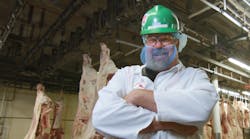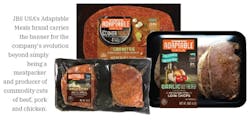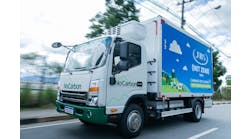We have three other stories on JBS as our Processor of the Year; see notes at the end of this story.
When a company the size of JBS USA wins Food Processing’s Processor of the Year award, it can be a challenge to pinpoint exactly which initiatives drove the most success. To move the needle enough for consideration, accomplishments must impact at significant depth or with a wide breadth.
JBS USA has produced outcomes that would fit into either category — and several that could be considered top-tier accomplishments for any company. Taken together, the picture becomes clear how JBS USA has motored ahead as some companies struggled.
Most people might still consider JBS USA more of a meatpacker and commodity fresh/frozen meat and poultry processor. Yet, the company has embarked successfully down the road into the prepared foods, value-added, case-ready, branded businesses in a big way, and those opportunities have factored nicely into the processor’s recent success.
Building its own opportunities
“Not many [processors] are looking to build a new Italian meats plant, as it’s very capital intensive,” Foster explains. “We took a different approach, from innovation, automation capabilities, flexibility, food safety and all the things that add value, and we did it on a whole different level with a new facility, a greenfield project.”
JBS USA opened the $200 million, 325,000-sq.-ft. Principe Foods facility in Columbia, Mo., in April. Principe is a decades-old Italian meats brand that JBS acquired and wanted to expand to the U.S., but simply didn’t have the capabilities to make the products in the states, Foster adds. The facility features a significant amount of automation to minimize the need for manual product transport and other less-than-desirable jobs, as well as a heavy emphasis on processing integration.
“Information can be captured and shared to help enhance the processes and allow for consistent manufacturing of finished goods,” Foster says. “It’s done in real time and allows for very quick interactions should adjustments need to be made.”
The construction of the Principe Foods plant wasn’t the only recent investment in the area, as JBS opened its precooked bacon plant in nearby Moberly, Mo., in 2021. Furthermore, Foster says that the company plans to invest further in the Moberly plant to “grow it to be a premier bacon plant,” with processing capabilities to add to the slicing and cooking operations currently in place.
Evolution of value-added
“We came from big production plants, where the business depends on big volume, simple mix, commodity-type items, which is a great business,” Noronha says. Yet, introducing value-added, case-ready production to the mega plants often posed a logistical challenge due to the lower volumes, higher complexity and more SKUs and changeovers required.
“In a large production facility, we talk about the 60-lb. box; with this business, we talk about a 6-lb. box with a few trays inside,” he says. “We needed to take complexity from the big plants, let them work on their core competencies of large volumes and simple orders, and send value-added, case-ready from the big motherships to a bunch of jet-skis to fulfill orders.”
So JBS USA’s large plants still create value-added, case-ready products, but they no longer ship value-added orders directly to customers. Instead, the plant receives one purchase order from one of the company’s smaller case-ready facilities (a full load of products that might contain products for multiple customers), where the load is broken down into smaller orders that are shipped to the customers.
As both the Adaptable Meals and La Herencia brands feature beef, pork and chicken, Noronha says they adhere to this tactic for all three species, with chicken shipped in from outside JBS.
“Changing this was more about production and process planning with a different mindset than infrastructure,” Noronha explains. “It’s not rocket science, but it is much easier for the larger plants as we grow our value-added business now and in the future.”
This approach already has proven its worth in the short term. Noronha relays the story of a retailer that approached the JBS value-added team looking for a way to draw more customers to its stores by offering a high-value, high-quality chicken product.
“The retailer had a strategy to offer $10 family-size products and $5 individual products, and they wanted us to help build it up,” he says. “So we looked at our Adaptable Meals chicken product and designed a two-piece, marinated chicken breast product that would hit that $5 mark without jeopardizing product quality — and it has taken off.”
The product was developed in a couple weeks, Noronha adds, due to the flexibility of the process and the tight focus of the small R&D team within the business unit. He adds that JBS’ move to reacquire, completely renovate and dedicate the former Greeley, Colo., lamb-processing plant was a catalyst for this project.
It had been a legacy Swift plant, sold to Mountain States Rosen in early 2016. JBS repurchased the plant in 2020, removed all the lamb-processing equipment and renovated it to house three value-added, marinated processing lines and one line for producing grinds — with room for future expansion as needed, Noronha says. Foster sees the company’s commitment to both divisions and believes investment from the company will continue.
“We’re reinvesting into our plants, we have our greenfield facilities and we’re also looking at acquisitions if opportunities arise,” he concludes. “So, we’re hitting it from all the different angles to find opportunities to grow.”
SEE ALSO:
2023 Processor of the Year: JBS USA




